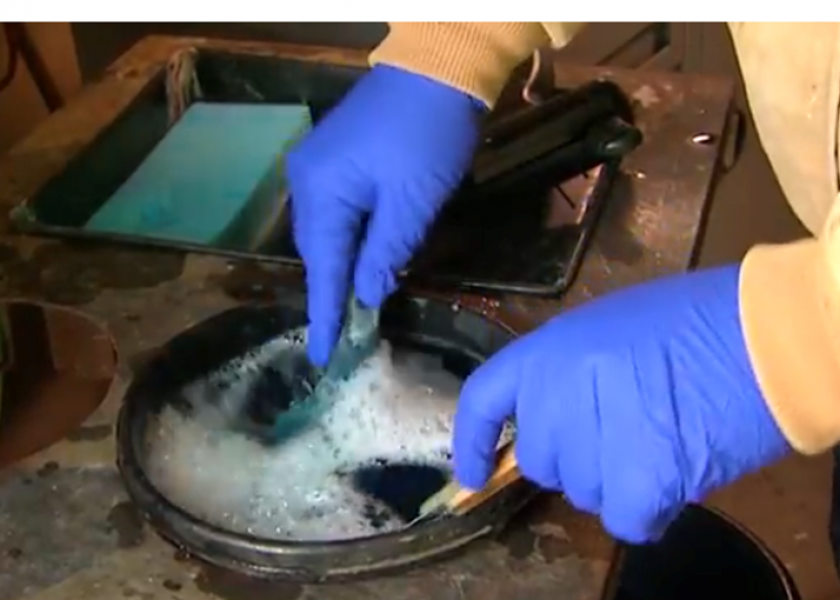Keep Implant Application Clean To Help Maximize Your Performance

If you’re not keeping your implant applications clean, you’re risking a significant money loss per head. Maximizing performance requires four simple and important steps: Wash and disinfect the needle; use chlorhexidine; always clean dirty or wet ears; and keep hands clean
and implants sanitary and dry.
Implants help steers and heifers finish stronger, but if your application technique is flawed and doesn’t use proven sanitation procedures, the whole program will fail to accomplish your goals. Make sure your implant administration process follows the practices below, or you might risk losing approximately $100 per head*,1 for every incorrectly administered implant.
No. 1: Clean and disinfect the needle
“One of the most important things that we can do is sanitize the needle before the next animal is implanted to reduce implant abscesses,” said Todd Koontz, senior marketing manager, Zoetis. As you set up your implanting station, make sure you have a tray filled with disinfectant and a sponge. Koontz emphasized that it is crucial that the implanting needle be cleaned on that sponge between every implant or mis-delivery, also known as “skips.” He also recommended this website for a video that demonstrates sanitation and administration techniques and how to set up an effective cleaning station for implanting.
Use chlorhexidine disinfectant: Never iodine or alcohol
A chlorhexidine disinfecting solution should be used for scrubbing dirty or wet ears before implanting. The solution should be mixed fresh daily and also used for cleaning implanting tools, such as needles and brushes. Never use the solution more than 12 hours after mixing it. And never use iodine or alcohol, Koontz said.
The disinfectant to use is called chlorhexidine. It is readily available, inexpensive and has been used successfully for decades as long as it’s properly and freshly prepared, Koontz said. With the proper solution and constant attention given to cleaning the implanting needle, the next priority is committing to simple ear cleaning techniques on each individual animal being implanted.
Always clean dirty or wet ears
“We don’t want to implant directly into a dirty or wet ear without cleaning it first,” Koontz said.
“We’re trying to minimize the chances of developing an abscess from contamination on the surface of the ear being carried with the needle. However, if you have a clean and dry ear, you can implant without having to clean it.”
To clean the ear, use a brush and the chlorhexidine cleaning solution contained in a small bowl or pan to scrub the ear clean before implanting, and remember: If you’re cleaning a lot of ears while implanting, keep the brush clean and covered by the chlorhexidine solution while not in use and refresh the solution often throughout the process, too.
Lastly, be sure to follow guidelines for implant placement in the middle-third of the ear along the valley, Koontz said. You’ll experience easier implanting if you make sure you can control the applicator comfortably.
Keep hands clean and implants clean and dry
Wearing gloves is simple and an easy way to ensure you can keep your hands clean during processing. Just be sure to wear latex or nitrile gloves, never cotton or leather, as they get contaminated easily and are not cleanable. You can use water or the chlorhexidine solution to clean your gloved hands.
Finally, remember to always keep implant cartridges in their packaging or a clean, dry container to protect them from moisture and contamination.
More tips from Zoetis about implanting techniques and applicators, along with available implants, can be found at NoStressSynovex.com.
References:
* Based on an average daily gain loss of 0.45-pound- across a 200-day period. Equation: 0.45 lb. x 200 days = 90 lb. additional live weight. Average live cattle price of $128/cwt; 90 lb. x $1.28 = $115.20/head loss on improper implants.
1Data on file, Study Report No. GASD 16-20.00, Zoetis Inc.
Photo Credit: Zoetis United States







